Introduction #
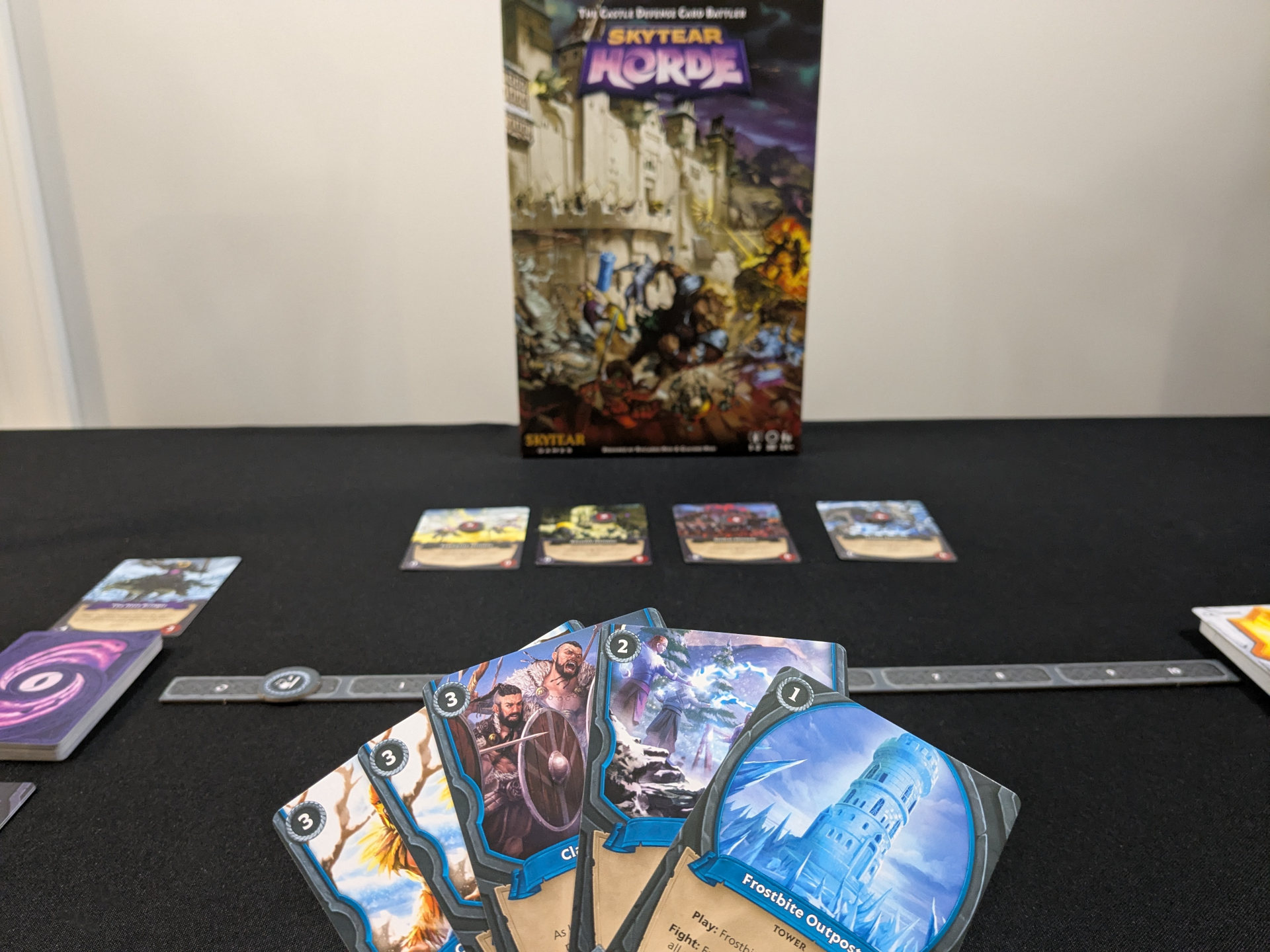
There’s something deeply satisfying about standing your ground against a relentless onslaught—knowing the odds are stacked, your resources are dwindling, and the enemy just won’t quit. That’s the tension Skytear Horde delivers, packaged in a slick box of cards, tokens, and clever mechanics. But here’s the twist: it’s not really a tower defense game. It pretends to be one, dresses like one, even throws around some terminology like “castle” and “lanes.” But beneath all that? It’s a card dueling game. In this board game review I’ll show you why, but you know what? If we cut to the chase, I still dig it.
This is one of those games that doesn’t fully reveal itself in the first play. In fact, my first game was so…chill…I thought I must’ve misread the rules. Turns out, I was just playing on normal difficulty. Rookie move. Flip the dial to hard, and suddenly Skytear Horde becomes the thrilling, tight experience it’s meant to be. Let me walk you through it.
Overview #
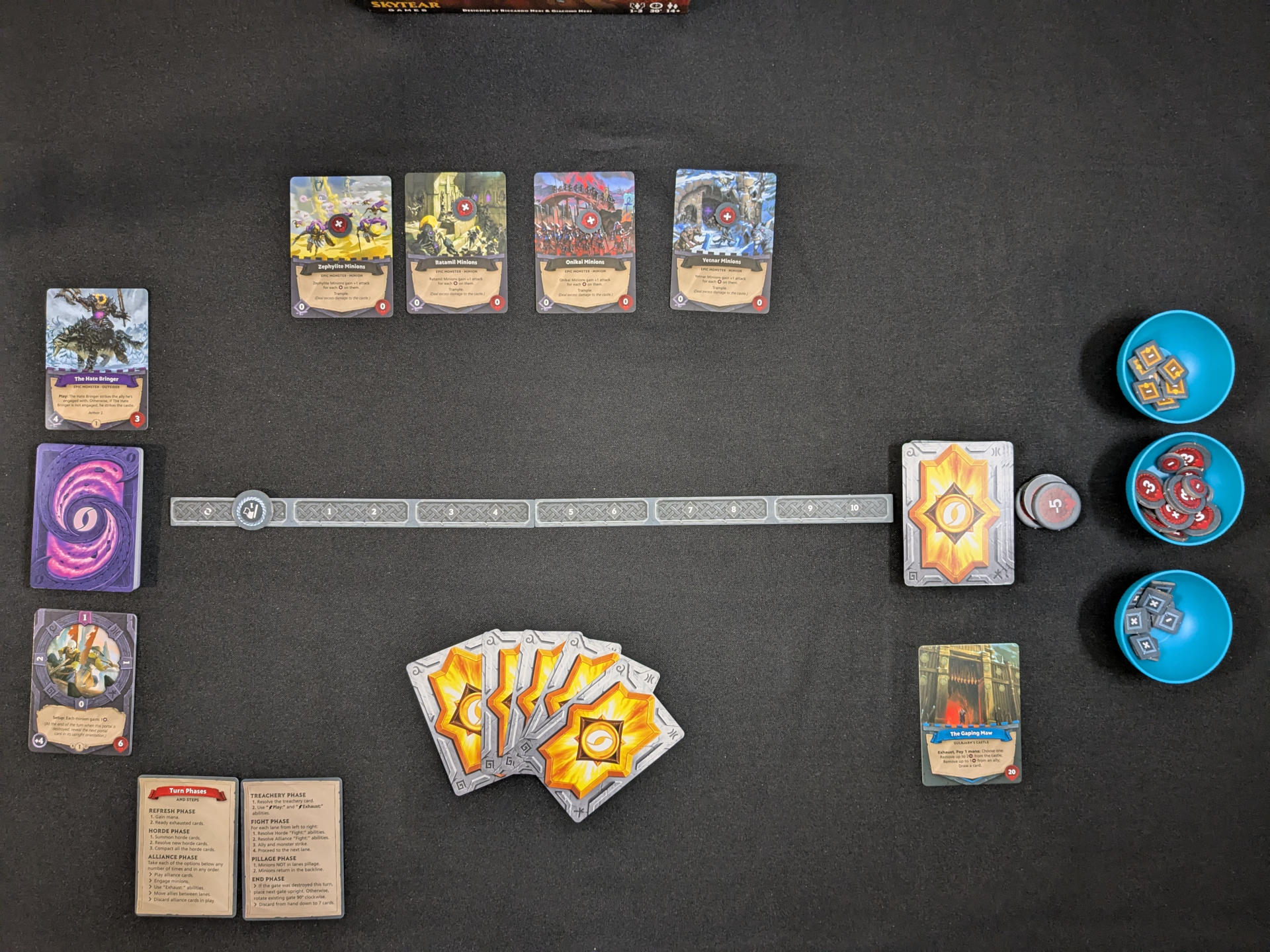
Each turn flows through seven phases—Refresh, Horde, Alliance, Treachery, Fight, Pillage, and End. That sounds like a lot, but the phases are short and they create a rhythm that feels intuitive after just a few rounds. The battlefield is six lanes wide. Monsters spawn into those lanes, you try to meet them head-on with allies or towers, and then the fight phase brings it all to life. If a monster has no opposition in its lane? It goes straight for your castle. Likewise, unopposed allies can strike the portals. That tug-of-war becomes the core of the game.
Victory means outlasting the horde and taking down the Outsider. But if your castle falls or your Alliance deck runs out? Game over, hero.
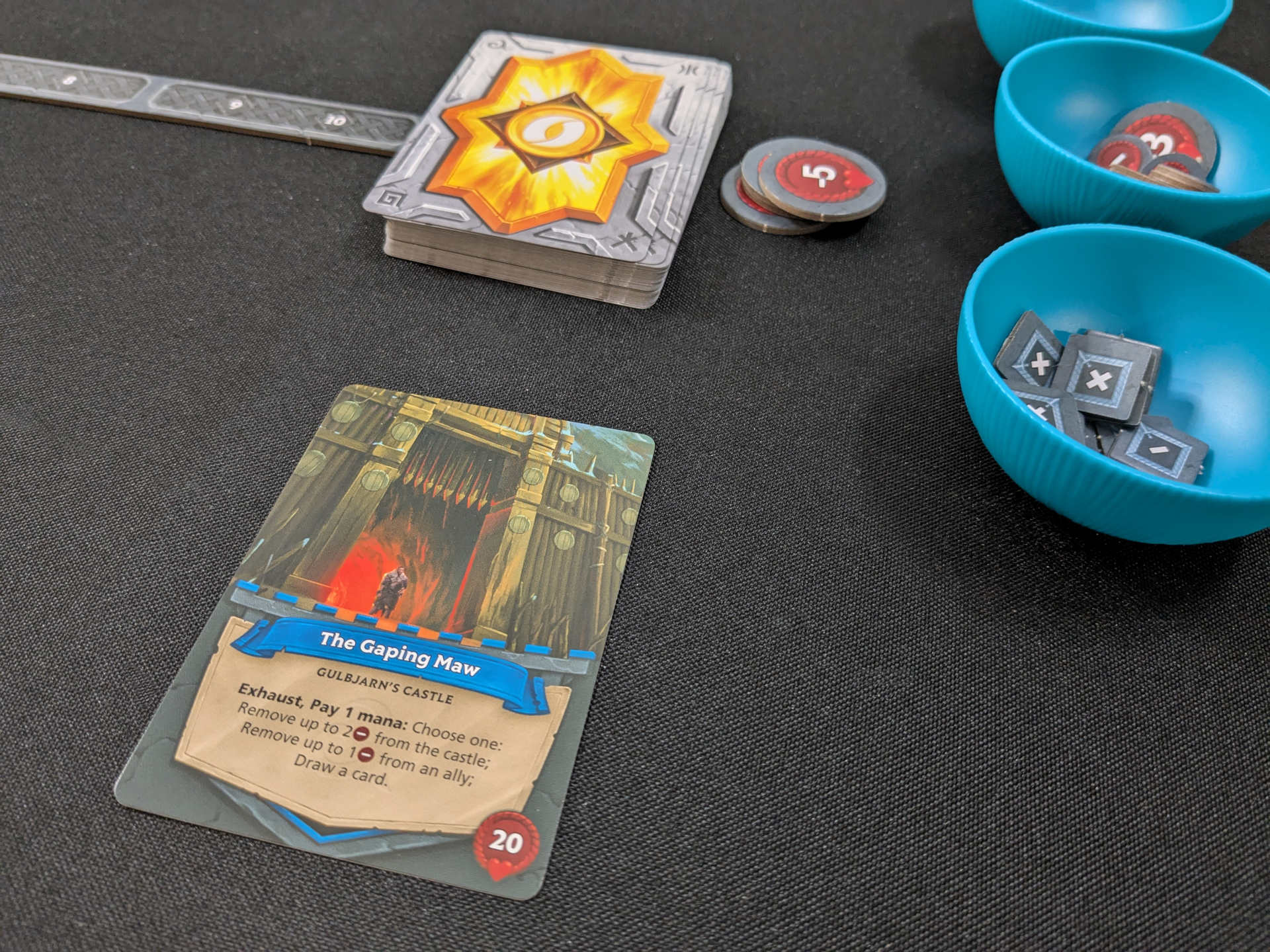
Gameplay #
Let me be honest: my first game had me scratching my head. I used the recommended starter decks and setup, played on normal difficulty, and…not much happened. Monsters would trickle in, I’d slap them with an ally, and I just kind of shuffled cards around awkwardly like a middle school dance. I expected chaos—waves of monsters, a castle barely holding on—and instead got a polite parade of weaklings.
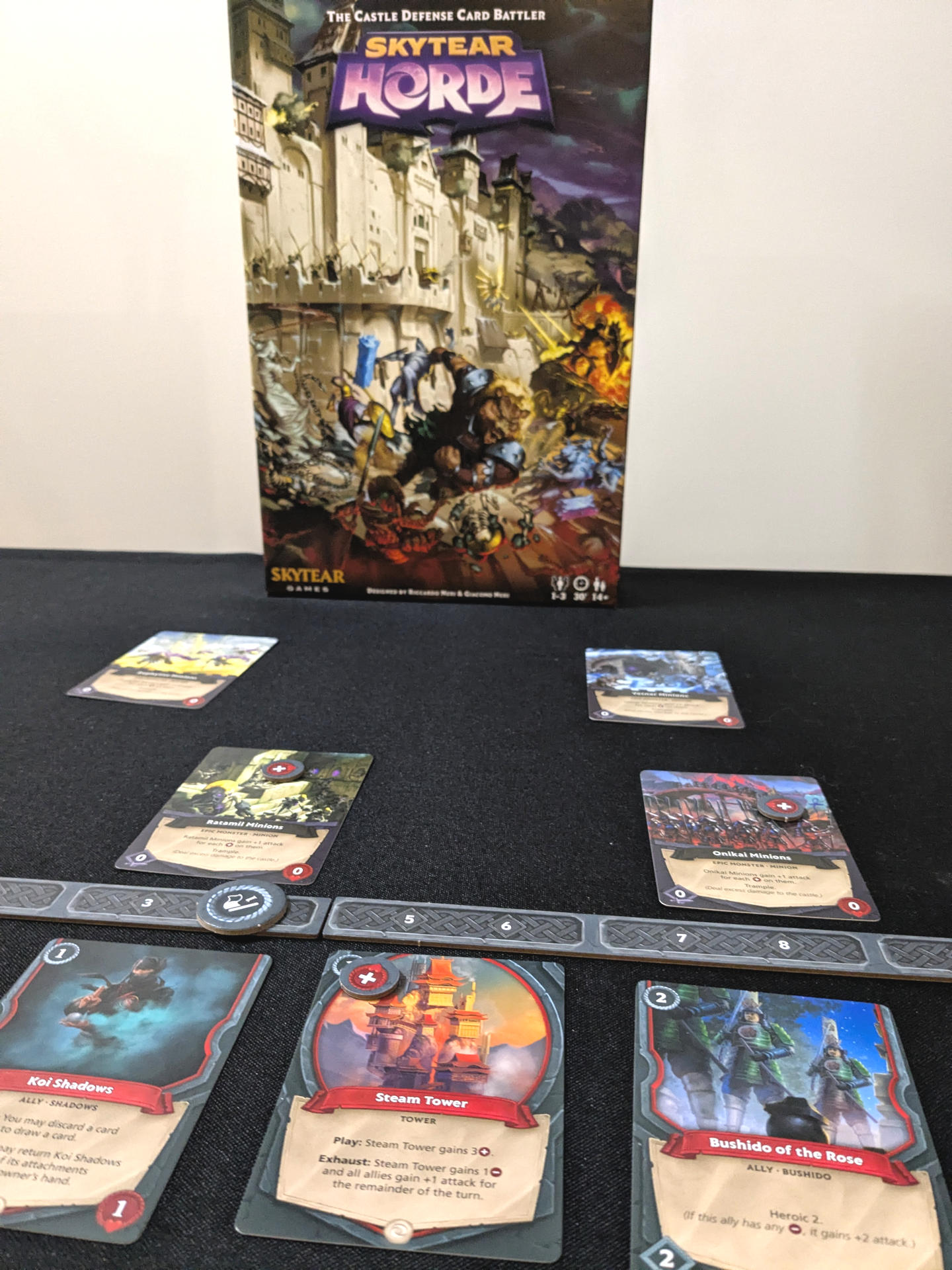
So I bumped it to hard difficulty, shuffled in a new Alliance, and then it clicked.
Suddenly, I was making real decisions. Do I take 3 damage to the castle this turn so I can keep my spell in hand for a bigger combo next round? Do I sacrifice an ally just to thin the board, knowing I’ll draw more if I’m aggressive? This game doesn’t reward turtling. In fact, if you don’t beat monsters quickly, you don’t draw more cards. If you don’t have cards to play, well…then you’re wasting mana. That aggressive tempo forces you into action every turn.
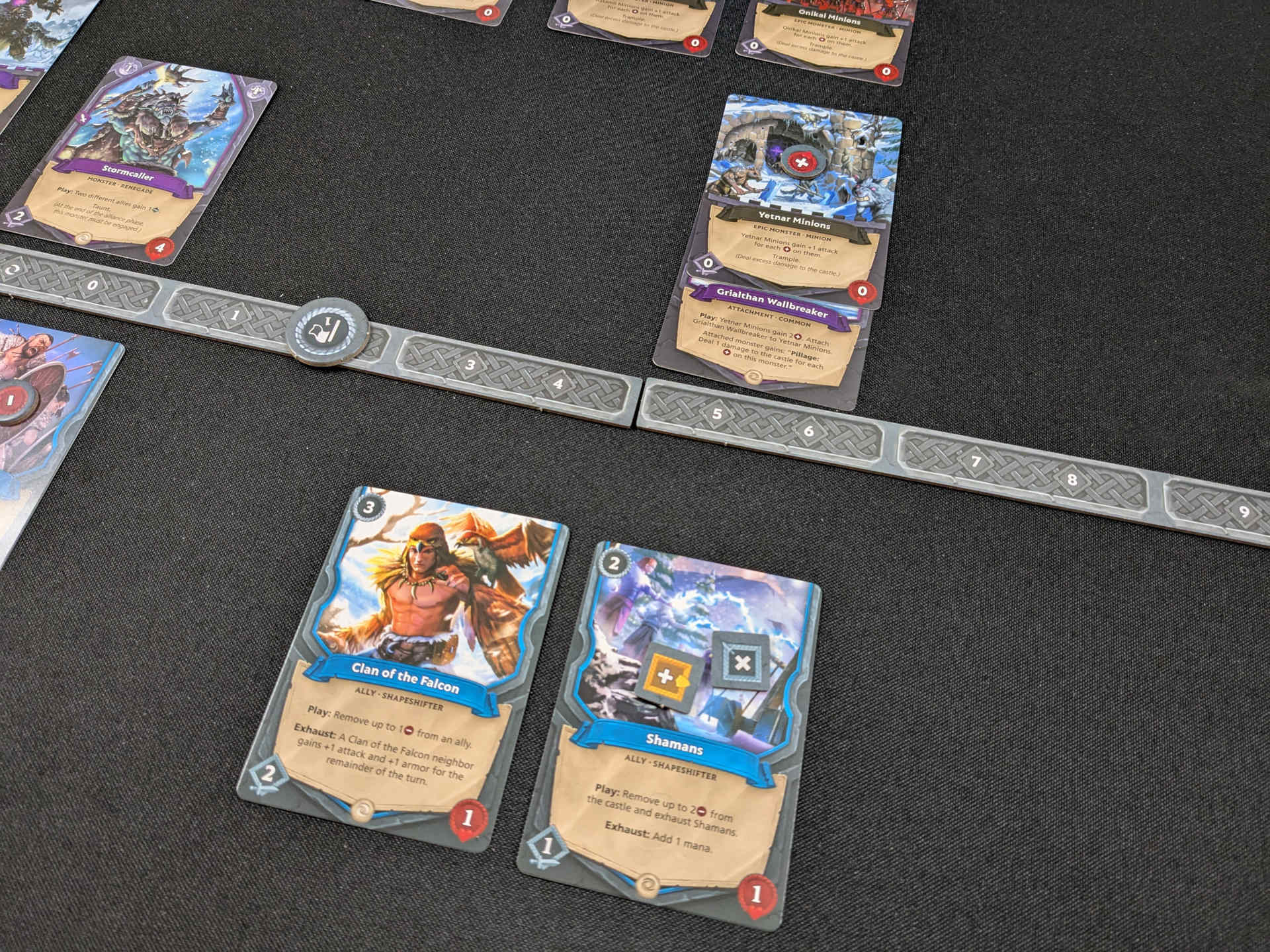
One of my favorite surprises? The minions. They start as cute little ankle-biters, barely worth your time as their threat to the Alliance deck is minimal. But leave them alone, and they start stacking power-ups—suddenly you’re staring down a glittering, buffed-up minion that’s stronger than anything else on the board and knocking out chunks of your Alliance deck every turn. I love that escalation. It’s simple, it’s elegant, and splitting your attention between the monsters in your lane and the pillaging minions is brilliant.
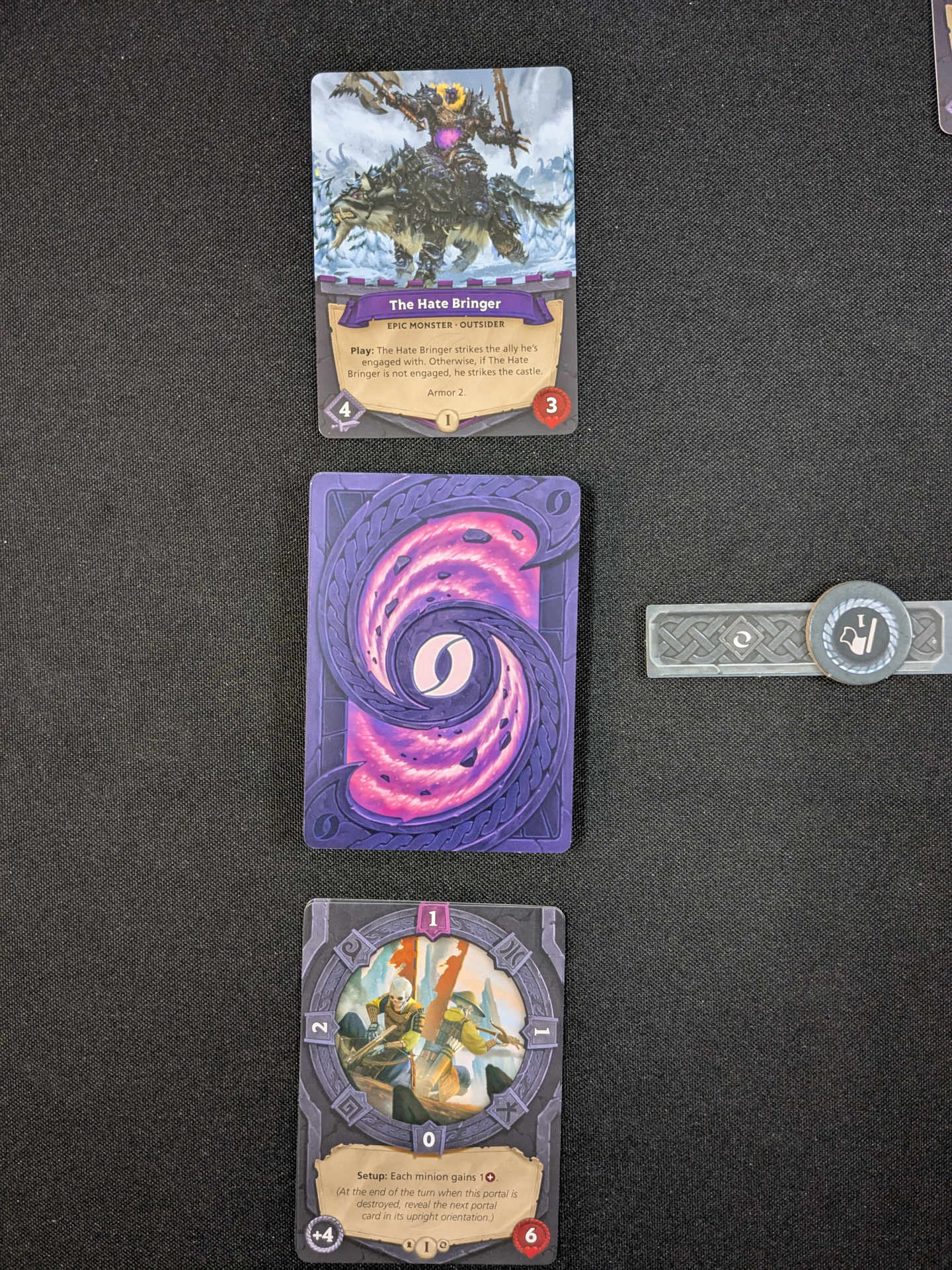
The game’s mana system is also worth mentioning. Instead of ramping up endlessly, it follows a bell curve: you gain more in the mid-game, then it drops off. That design choice creates an interesting arc. Do you dump everything into building a mid-game army to carry you through the Outsider fight? Or hoard mana late-game and try to pull off a cinematic, game-winning combo? Whatever you do, just try not to run out of gas at the end.
The game phases are not too hard to follow and there aren’t complicated interruption sequences in other MtG-like (Magic the Gathering) games. This makes the game very approachable, but there is still enough complexity with the keywords and card effects to keep it engaging.
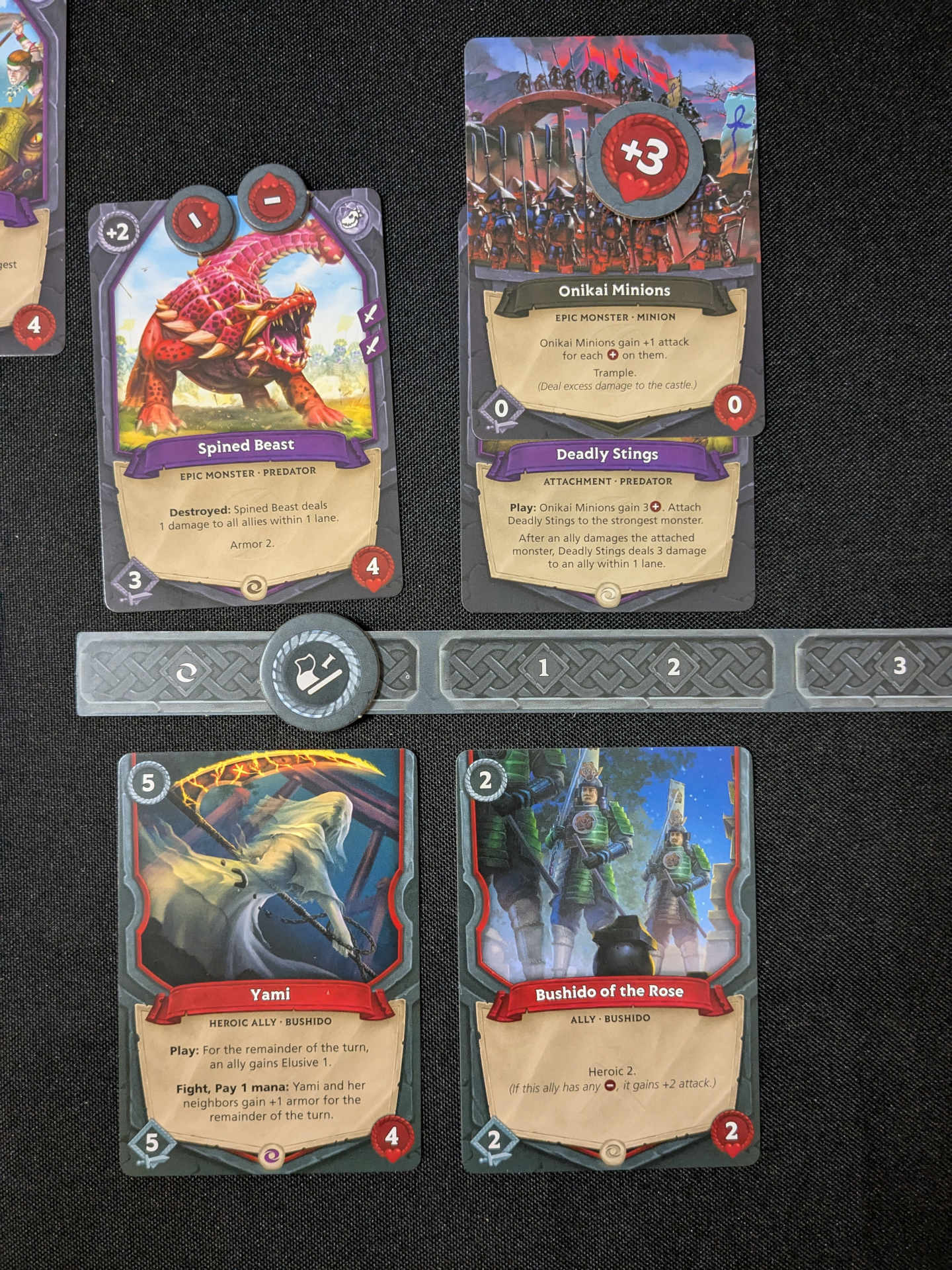
The cards themselves are varied and compelling. Allies with on-play and exhaust effects. Spells that combo in surprising ways. Towers that… well, ok, towers are a little weird. They don’t actually defend your castle. They activate and do things, sure—but if there’s a monster in the lane, it just strolls right past the tower and smacks your castle in the face. I expected them to block, or at least intercept. Instead, they’re kind of like magical vending machines: useful, but not defensive. That disconnect is one of the few places where the theme and mechanics didn’t quite align for me.
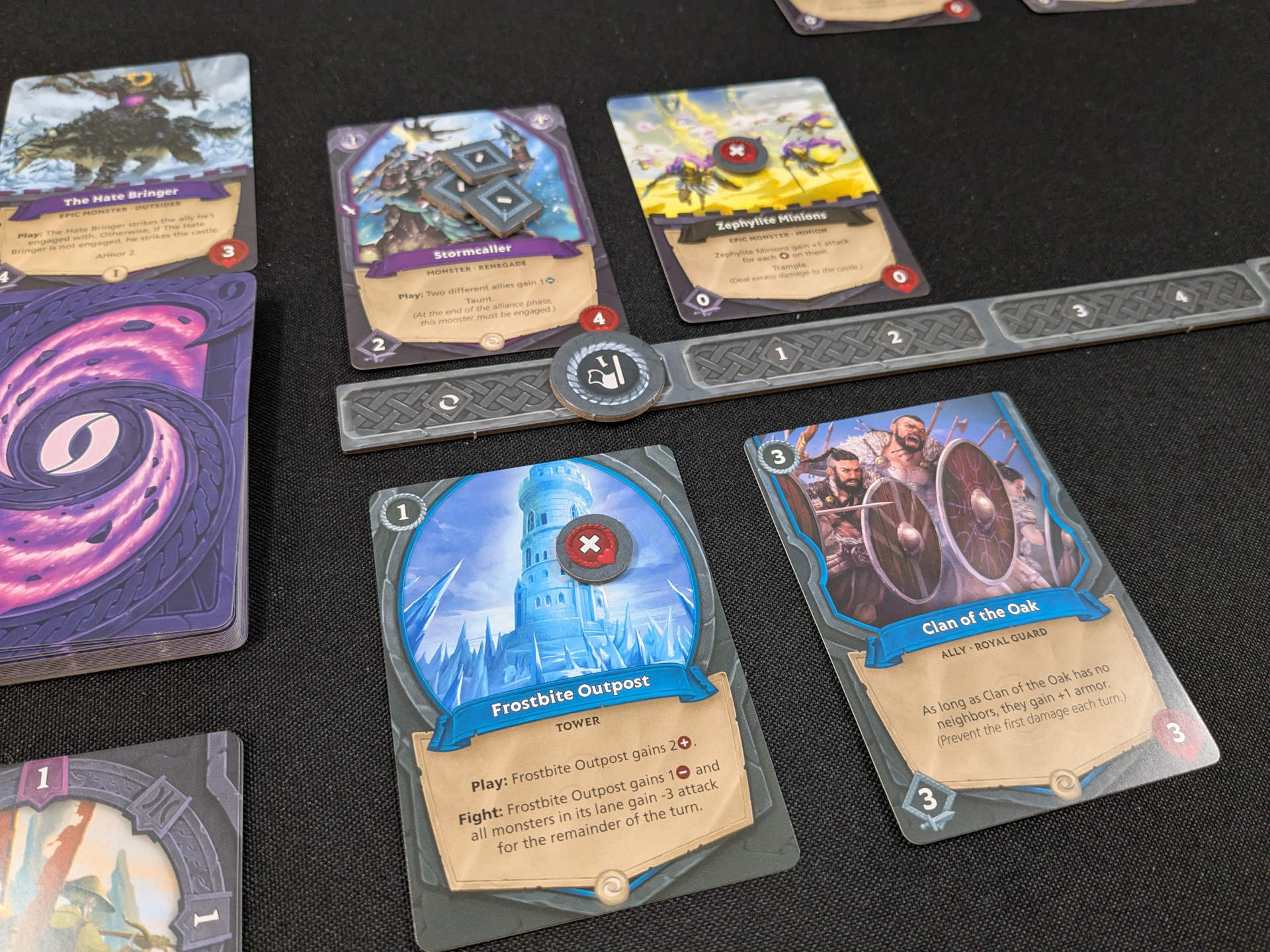
Also, if you’re coming in expecting a traditional lane or tower defense game—like Plants vs. Zombies or Kingdom Rush—this isn’t quite that. The lanes are more about match-ups than they are about holding positions. There’s no queue of units, no stacking of threats. You’re not building a per-lane strategy as much as you are playing a head-to-head card duel across six simultaneous arenas. It’s exciting, but it may not scratch the same itch.
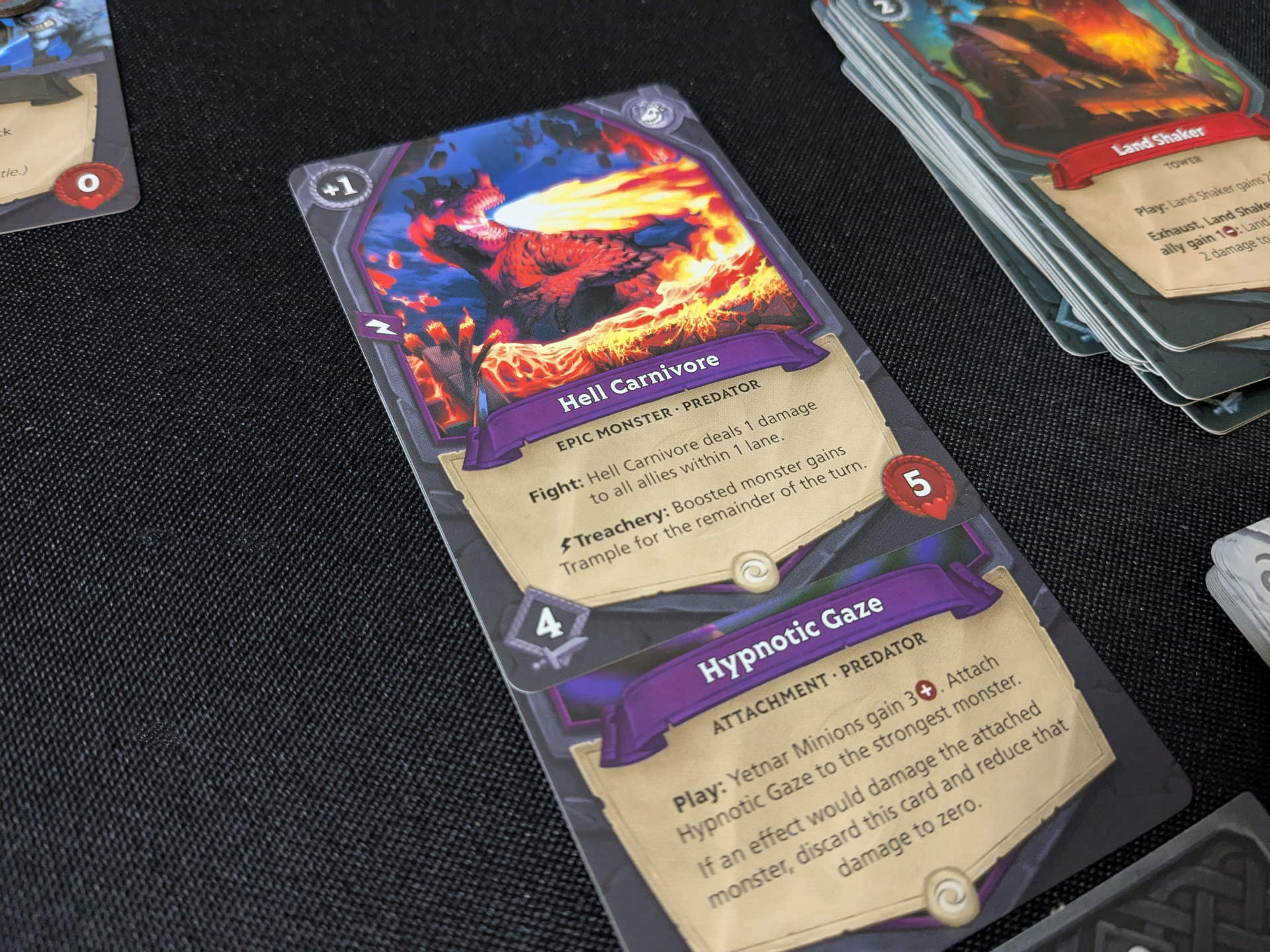
That said, the Treachery phase is a delight. It’s a little boost of chaos each turn—enemy modifiers or powers that shake things up just enough to keep you from feeling totally in control. It gave me the same kind of “oh no, what now?” tension that villain boost cards provide in Marvel Champions. That kind of randomness keeps the game dynamic without making it feel unfair.
One caveat: if you’re not into deck construction, the included factions might feel a little limited. I would’ve loved to see a couple more Alliance and Horde factions in the base box, just to mix things up. For tinkerers, it’s a solid starting point and there’s more longevity through deck construction, but more content would help there too.
Solo Play #
Solo is where Skytear Horde really shines. It’s designed as a cooperative game, but everything about it scales beautifully to one player. No two-handed fiddling, no need to simulate extra players—it just works. Turns move quickly, decisions feel meaningful, and the pacing stays tight.
There’s also a list of achievements in the rulebook that give solo board gamers (and cooperative players too) more goals to chase after—like unlocking hard modes in old video games. That extra bit of replayability is a nice touch and makes the experience feel more curated.
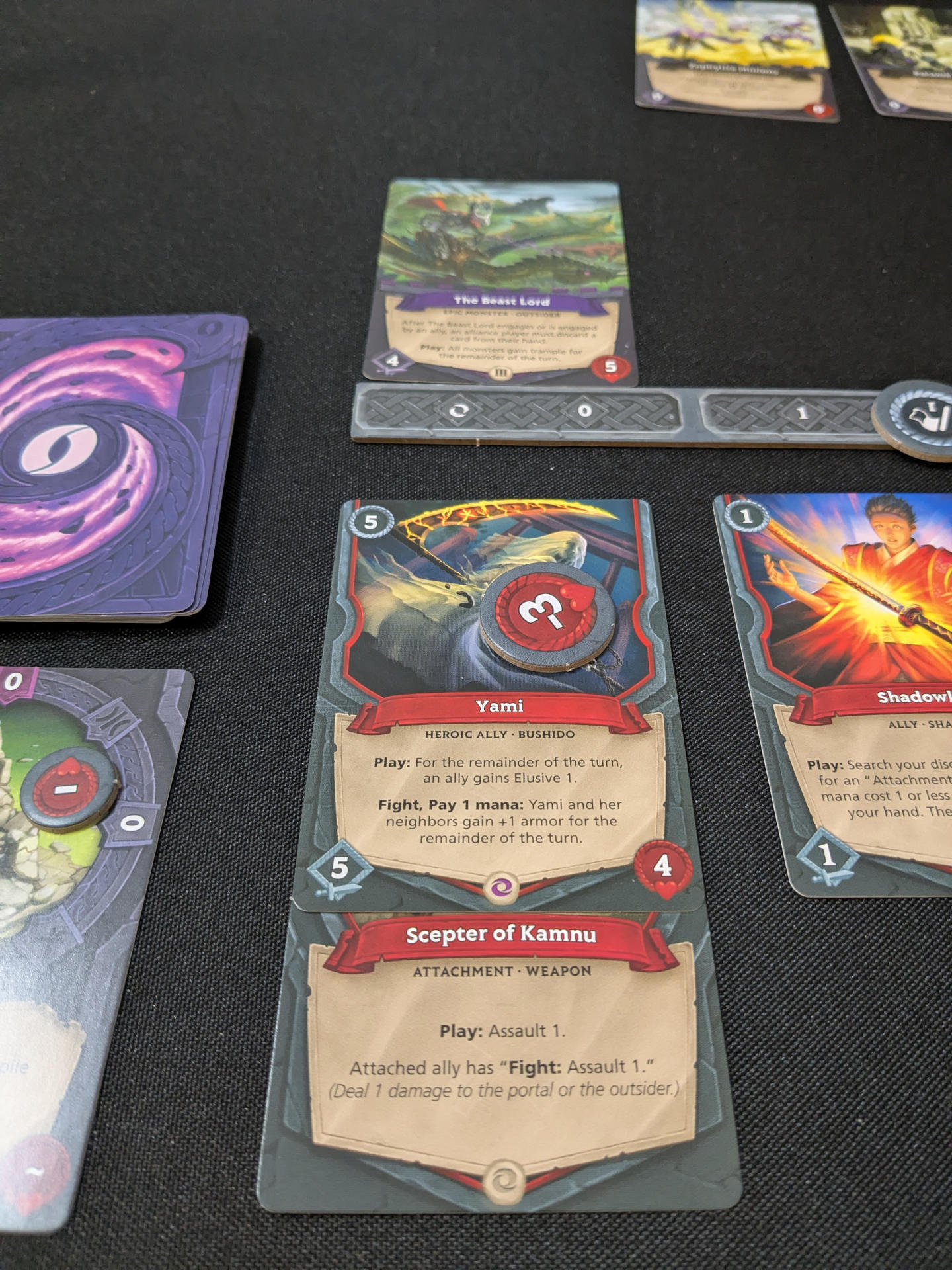
I should mention that Skytear Horde offers a competitive mode for 2-3 players which allows a player to control the horde. I’m curious if that would be a satisfying variant for solo board gamers too, but alas, that wasn’t included in solo.
Components and Design #
Let’s talk aesthetics for a second. Skytear Horde looks gorgeous. I found myself pausing mid-game just to admire the artwork and card names. The fantasy theme comes through strong on the card designs—each faction feels distinct and deep, and the Outsiders are suitably intimidating. Unfamiliar with the lore of Skytear, I found myself pausing and just imagining the kind of world these characters come from—flipping cards and wondering what stories connected these creatures, spells, and crumbling castles.
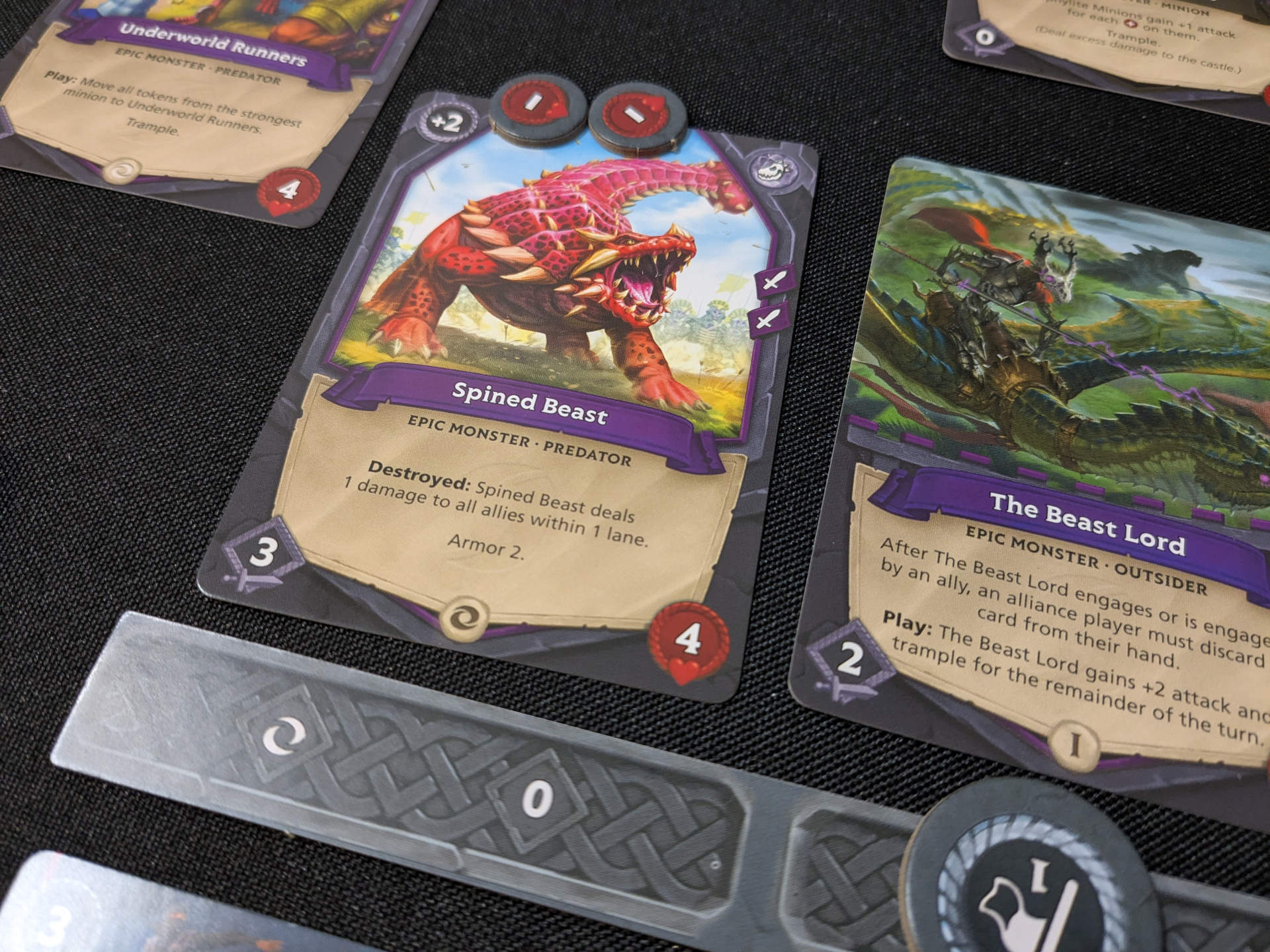
A smart design decision was including brief subtext explanations on keywords right on the cards. It’s like having a built-in cheat sheet, and it smooths the learning curve immensely. You still get plenty of crunchy mechanics, but it’s far less overwhelming than something like Magic: The Gathering.
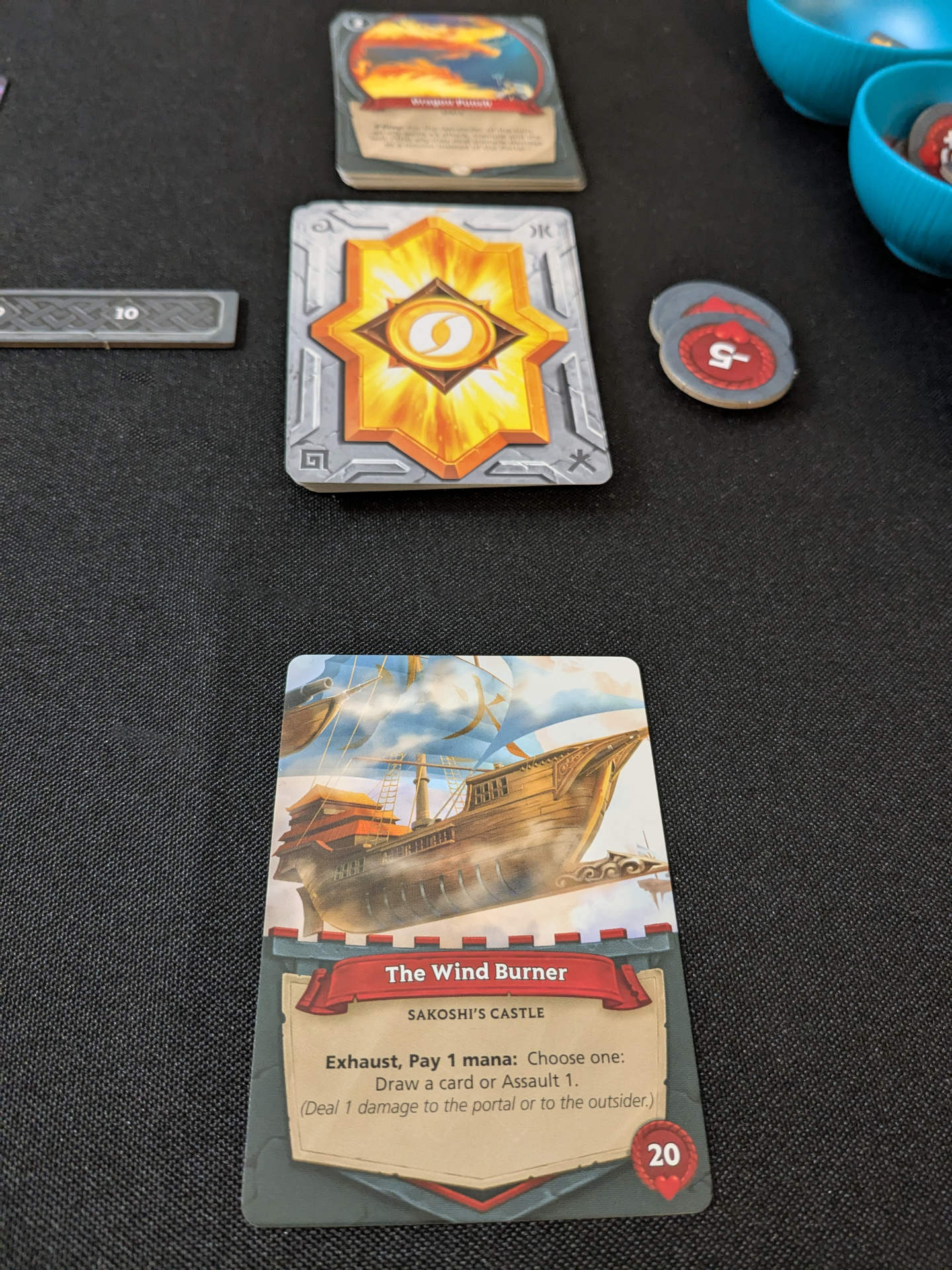
I was worried about the fiddliness of the counter tokens, but the tokens are double-sided for increasing and decreasing stats, and that helped a ton. I actually liked it. Since I was often moving health from one card and applying it as damage to another, the back-and-forth flowed naturally—less fiddling, more fun.
Final Thoughts #
So—do I like Skytear Horde?
Yeah. I do. It took a second to warm up to, but once I hit the right difficulty and got a feel for its rhythm, it became a tense, fast-paced card battler with surprising depth. It’s got that “one more game” energy, especially in solo, and the achievement system gives it a lot of staying power.
That said, it’s not going to be for everyone. If you’re looking for a traditional tower defense game with static defenses and wave management, you might be left wanting. And if you’re not into customizing decks or trying out different builds, the variety out of the box might feel a little thin.
But if you like tight card battles, clever combos, and games that reward tactical decisions under pressure—Skytear Horde is a great pick.
We purchased this product independently. All opinions expressed are independent, honest, and unbiased.
- Card abilities are varied, synergistic, and fun to experiment with across different factions.
- Artwork and component quality are excellent, adding immersion and polish.
- Balancing threats to both your castle and your deck creates constant, meaningful decision-making.
- The base box could use more faction variety.
- The game starts slow on normal difficulty and only shines at higher levels.
- It doesn't scratch the same itch as traditional lane or tower defense games.
Learn more about how we rate board games...
